By Robert G. Segel
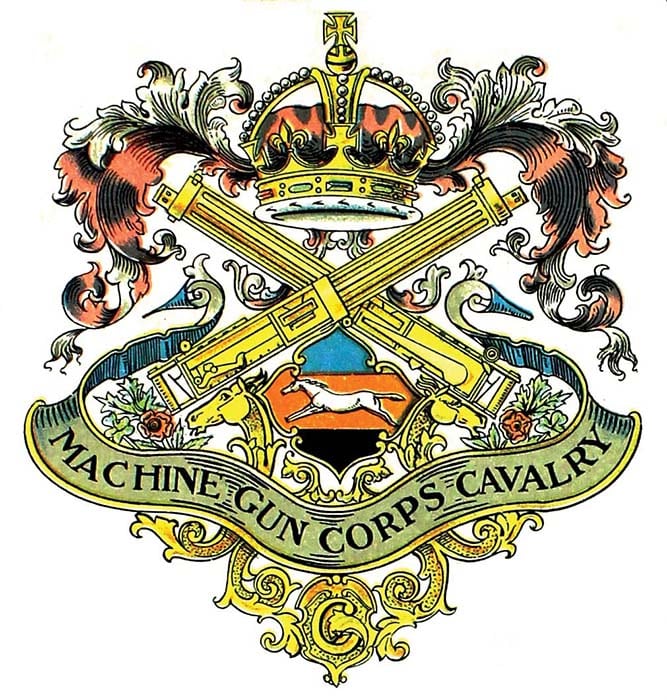
I. Heraldry Insignia of the Machine Gun Corps Cavalry. The British Machine Gun Corps (MGC), formed in 1915, was initially divided into three branches–the MGC (Infantry), the MGC (Cavalry) and the Motor Machine Guns (MMG). Later there was a Heavy Section formed in 1916 that ultimately became the Tank Corps. The Infantry is the most well known followed by the Motor Machine Guns. However, the Cavalry Divisions, Yeomanry and Squadrons were based throughout the world and served the Empire in all battle campaigns and far flung outposts. The MGC Cavalry Squadron consisted of eight officers and 203 other ranks, equipped with 299 horses, 18 limbers, one GS wagon and one water cart. These were formed up into six two-gun sections each of a Subaltern, 33 men and 46 horses. The Squadron was commanded by a Captain or Major. A depot for the MGC Cavalry was formed at Maresfield Park. Their battle honors include Mons 1914-18, Ypres 1914-15, Somme 1915-18, Arras 1917, Cambrai 1917, Amiens 1918, Gallipoli 1915, Rafa 1916, Bersheba 1917, Jordan Valley 1918, India 1914-18 and the Persian Gulf. The Cavalry Divisions served on the Western Front and Flanders as well as in Gallipoli and in Mesopotamia throughout the war and took part in actions where cavalry was used as a mounted mobile force and where the troops were dismounted and effectively served as infantry.
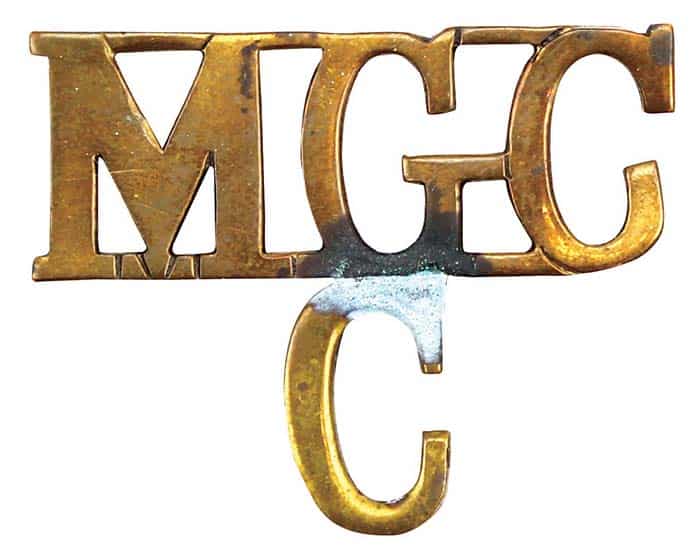
II. While the cap badge and collar badges of the Machine Gun Corps were the same regardless of branch with the King’s crown over crossed Vickers, the brass shoulder titles delineated the branches. For the Cavalry units, a “C” was placed under the MGC title.
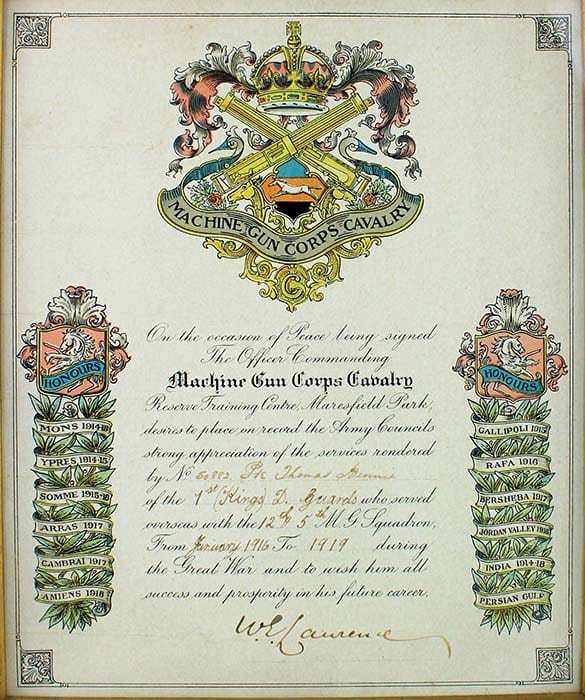
III. A veteran’s end of war certificate that reads, “On the occasion of Peace being signed, The Officer Commanding Machine Gun Corps Cavalry Reserve Training Centre, Maresfield Park, desires to place on record the Army Councils strong appreciation of the services rendered by No. 50882 Pte. Thomas Simms of the 1st (Kings) D. Guards (1st Kings Dragoon Guards) who served overseas with the 12th 5th M.G. Squadron, from January 1916 to 1919 during the Great War and to wish him all success and prosperity in his future career.”
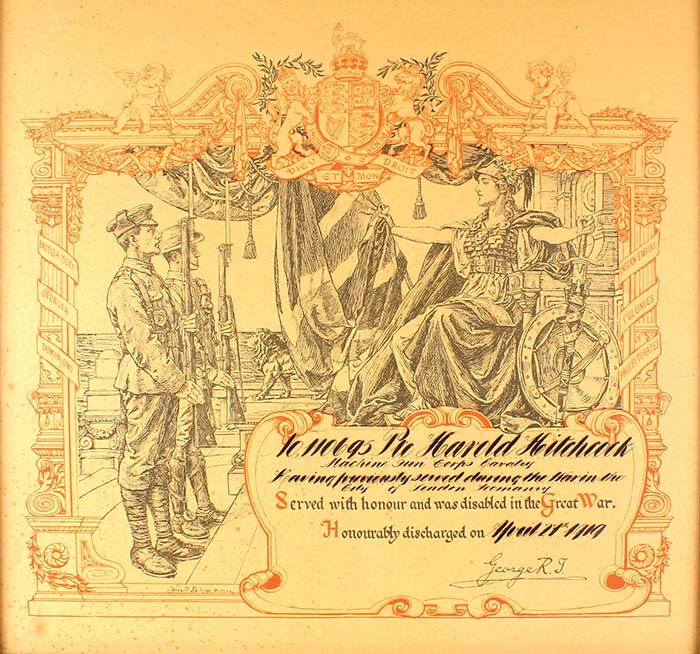
IV. A wounded veteran’s discharge certificate that reads, “To 110695 Pte. Harold Hitchcock, Machine Gun Corps Cavalry, Having previously served during the War in the City of London Yeomanry, Served with honour and was disabled in the Great War. Honourably discharged on April 11th 1919.”
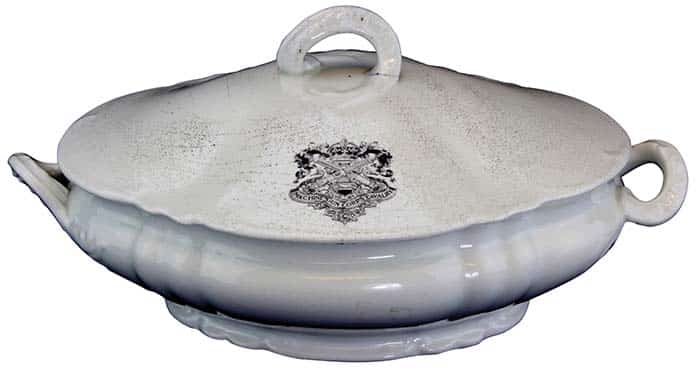
V. British Army Machine Gun Corps Cavalry officer’s mess tureen to serve soup, stews or casseroles with lid. The insignia of the MGC Cavalry is well displayed on the lid. The style of this tureen is probably from the Maresfield Park depot. Maker marked clearly on the bottom, “John Maddock & Sons Ltd England Royal Vitreous” with a Victorian crown.
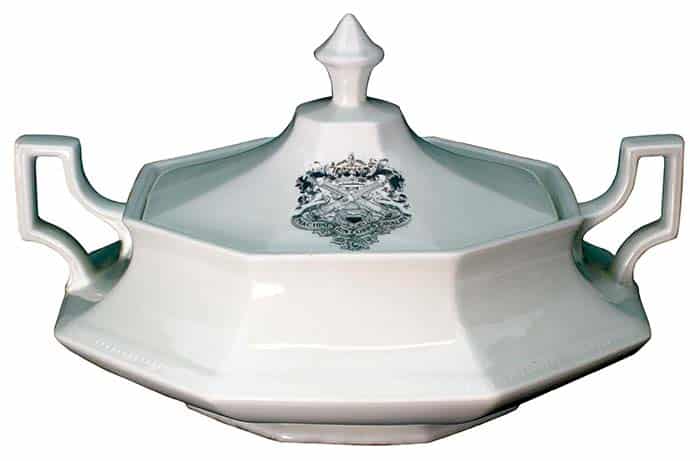
VI. British Army Machine Gun Corps Cavalry officer’s mess soup, stew or casserole tureen with lid. The insignia of the MGC Cavalry is well displayed on the lid. The style of this tureen indicates it is from an officer’s mess either from the Middle East Persian Gulf region or India. It is maker marked clearly on the bottom, “Stubbs & Kent Longport.”
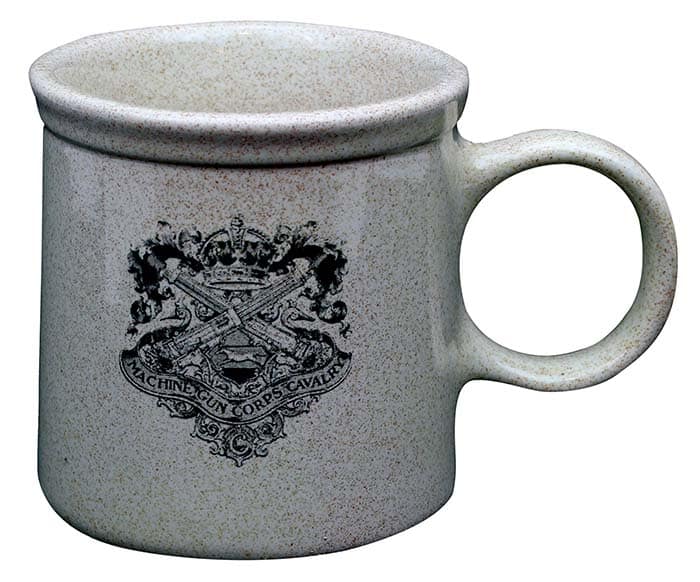
VII. Stoneware coffee cup probably from the NCO mess at the Maresfield Park depot emblazoned with the insignia of the Machine Gun Corps Cavalry. No maker marks.

VIII. Glazed stoneware pot for a variety of uses such as a biscuit, jam or pickle jar. Either a private purchase or officer’s/NCO mess item. Under the glaze is the insignia of the Machine Gun Corps Cavalry. The pot is 8 inches in height and 6 inches in diameter.
| This article first appeared in Small Arms Review V21N5 (June 2017) |












